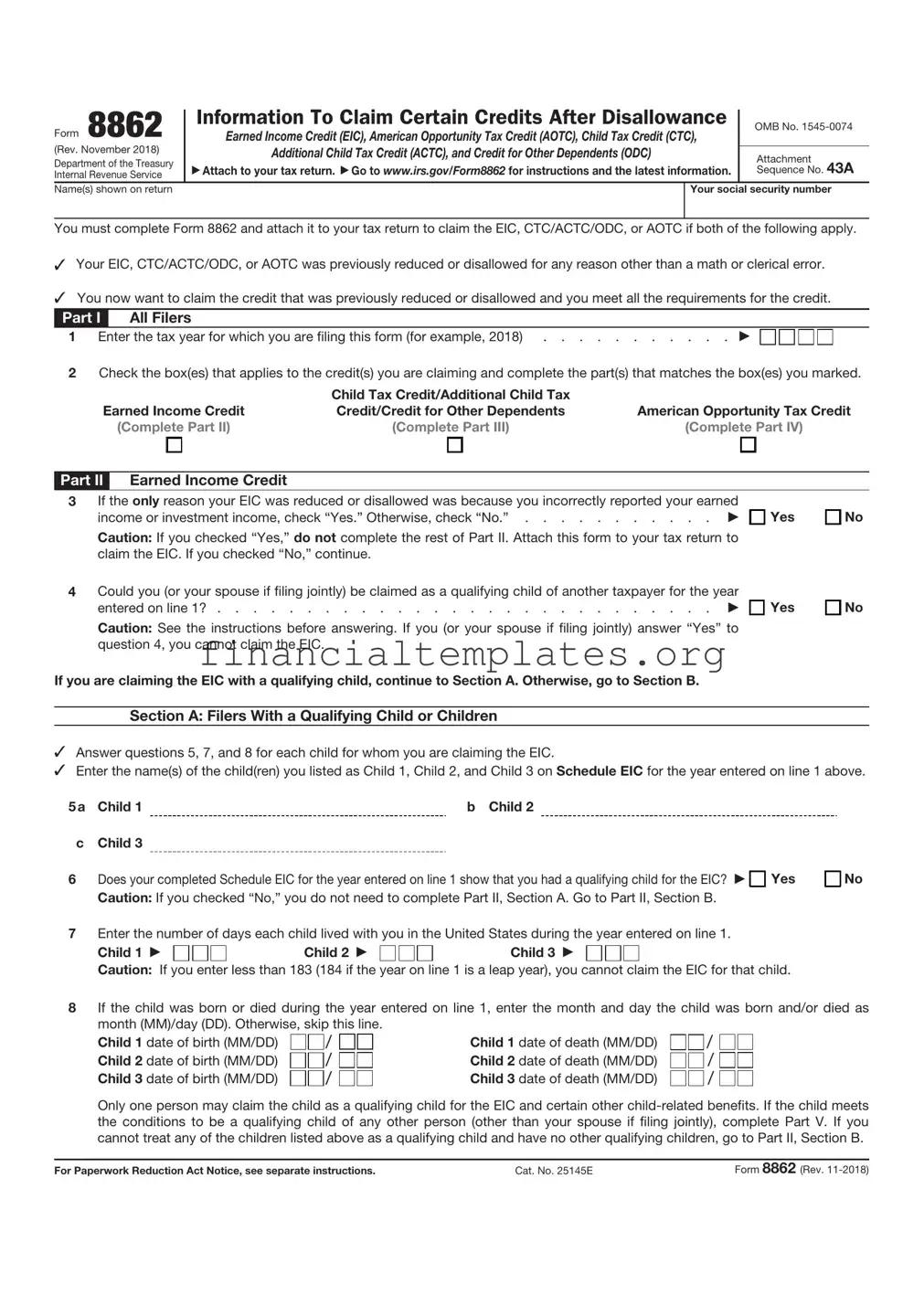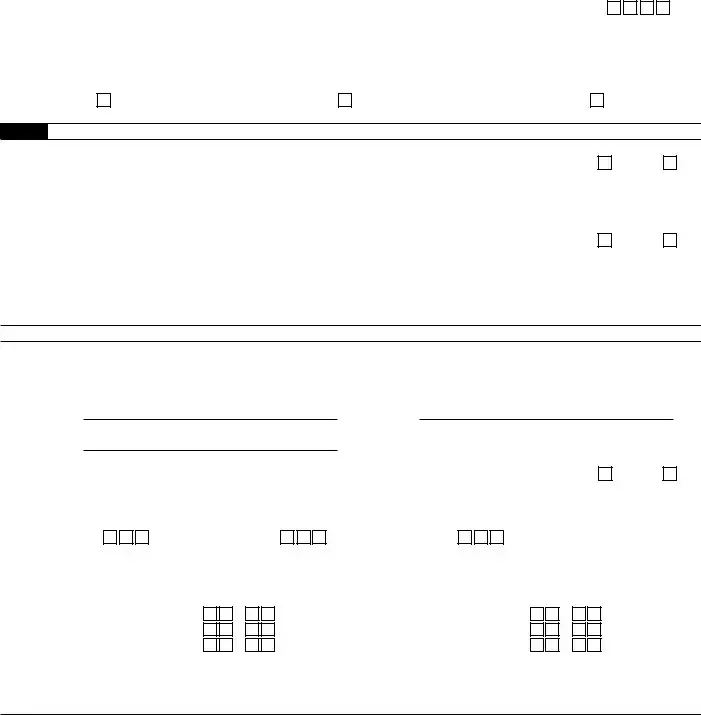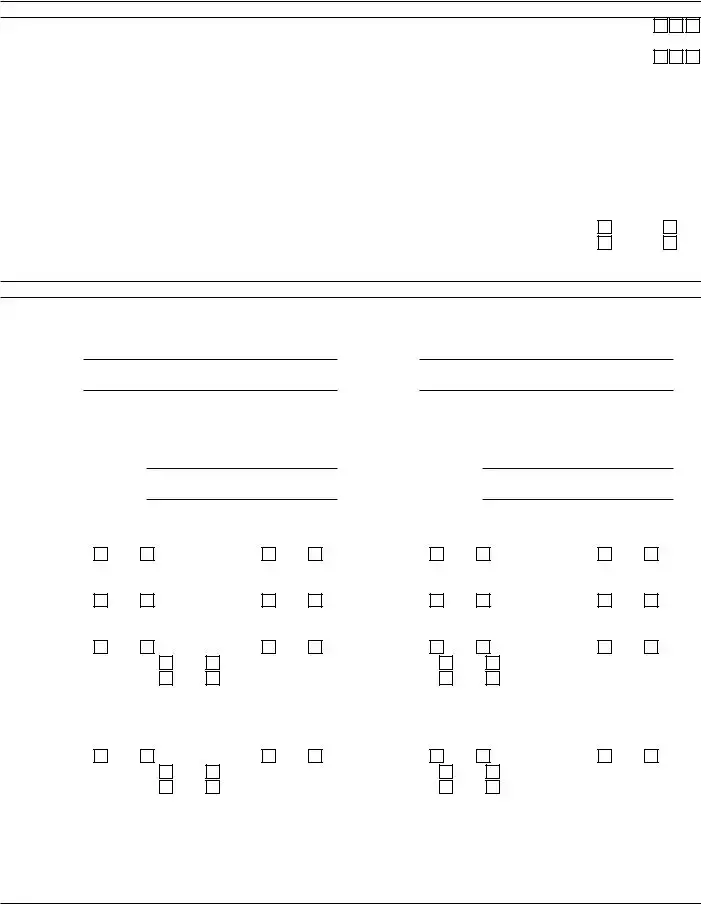The IRS 1040 form, commonly known as the U.S. individual income tax return, showcases similarities to the IRS 8862 form in its purpose of reconciling an individual’s tax liability with income, deductions, and credits claimed. Both forms are integral to calculating taxes owed or refunds due, but the 8862 is specifically used to claim certain credits after disallowance.
The IRS Schedule EIC (Earned Income Credit) accompanies a tax return to provide specific information about dependents which is necessary for claiming the Earned Income Tax Credit, akin to how form 8862 is used to reinstate eligibility for this credit if previously disallowed.
Form 8863, Education Credits (American Opportunity and Lifetime Learning Credits), resembles the 8862 in its function to claim specific tax benefits, focusing on education credits rather than the Earned Income Credit or child tax credits, highlighting the tailored approach of the IRS forms towards specific tax benefits.
Similar to form 8862, the IRS Form 2441, Child and Dependent Care Expenses, is used for claiming specific tax benefits directly related to child and dependent care. Both forms contribute to tax filers' eligibility for particular credits based on personal and family expenses.
Form 5695, Residential Energy Credits, parallels Form 8862 by targeting a particular area of tax credits, this time for energy-efficient home improvements. While form 8862 pertains to the reinstatement of eligibility for certain credits, form 5695 addresses the claiming process for different types of incentives.
IRS Form W-7, Application for IRS Individual Taxpayer Identification Number, shares a commonality with Form 8862 in regard to its specific audience and purpose. While Form W-7 is used by individuals requiring an ITIN to file U.S. tax returns, the 8862 form is specifically for those needing to requalify for tax credits previously denied.
Form 8839, Qualified Adoption Expenses, is designed for taxpayers to claim adoption-related expenses, showing a similarity to form 8862 in the sense that both deal with personal family situations that impact tax liabilities and potential credits.
Form 8962, Premium Tax Credit (PTC), is akin to form 8862, in that both are used to navigate the complexities of claiming tax credits. Form 8962 is specific to the Affordable Care Act, helping taxpayers reconcile or claim the premium tax credit, just as 8862 helps with the Earned Income Credit and child tax credits.
Lastly, Form 8857, Request for Innocent Spouse Relief, although not a direct analog to form 8862 in terms of subject matter, resembles it in the sense of serving individuals in specific tax situations seeking relief or reinstatement of certain tax benefits or relief from joint tax liabilities.




